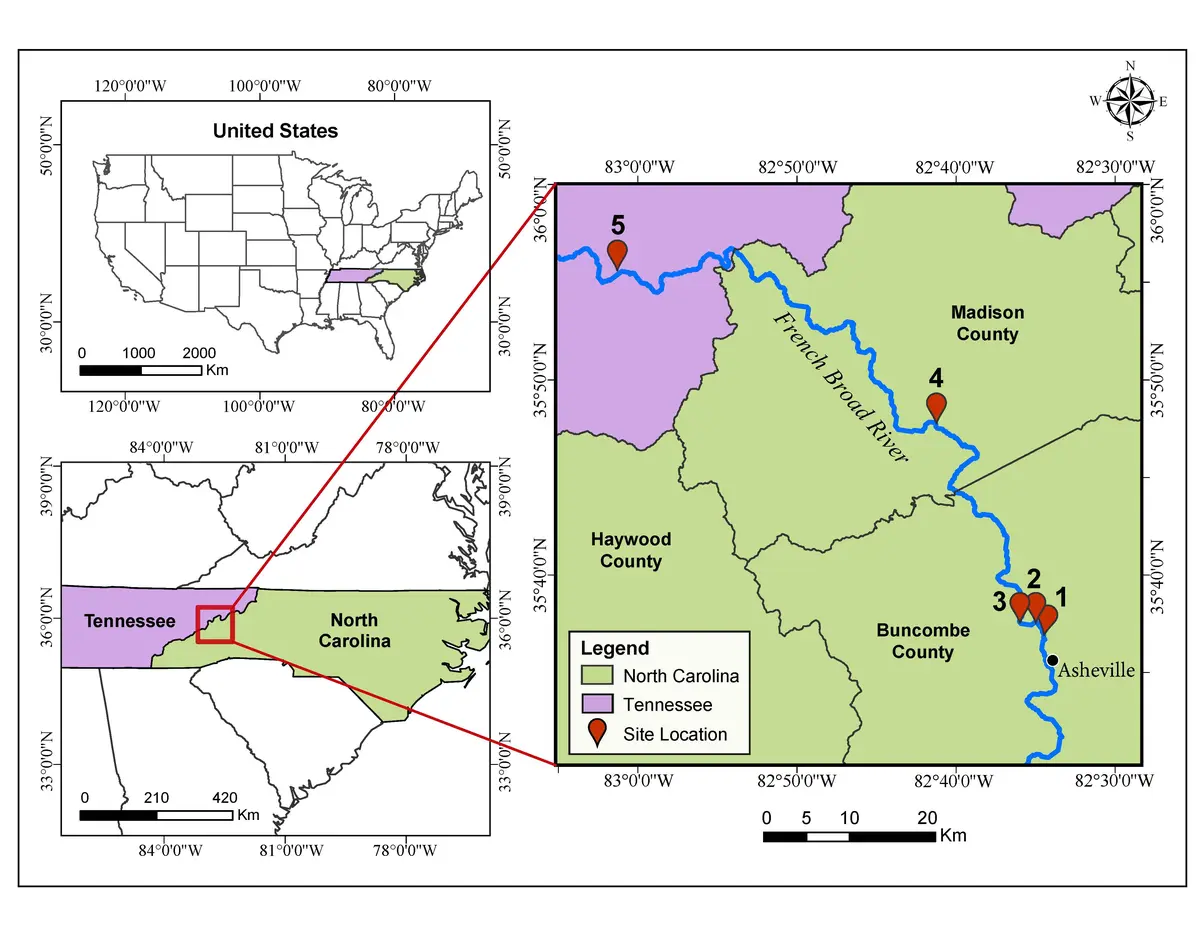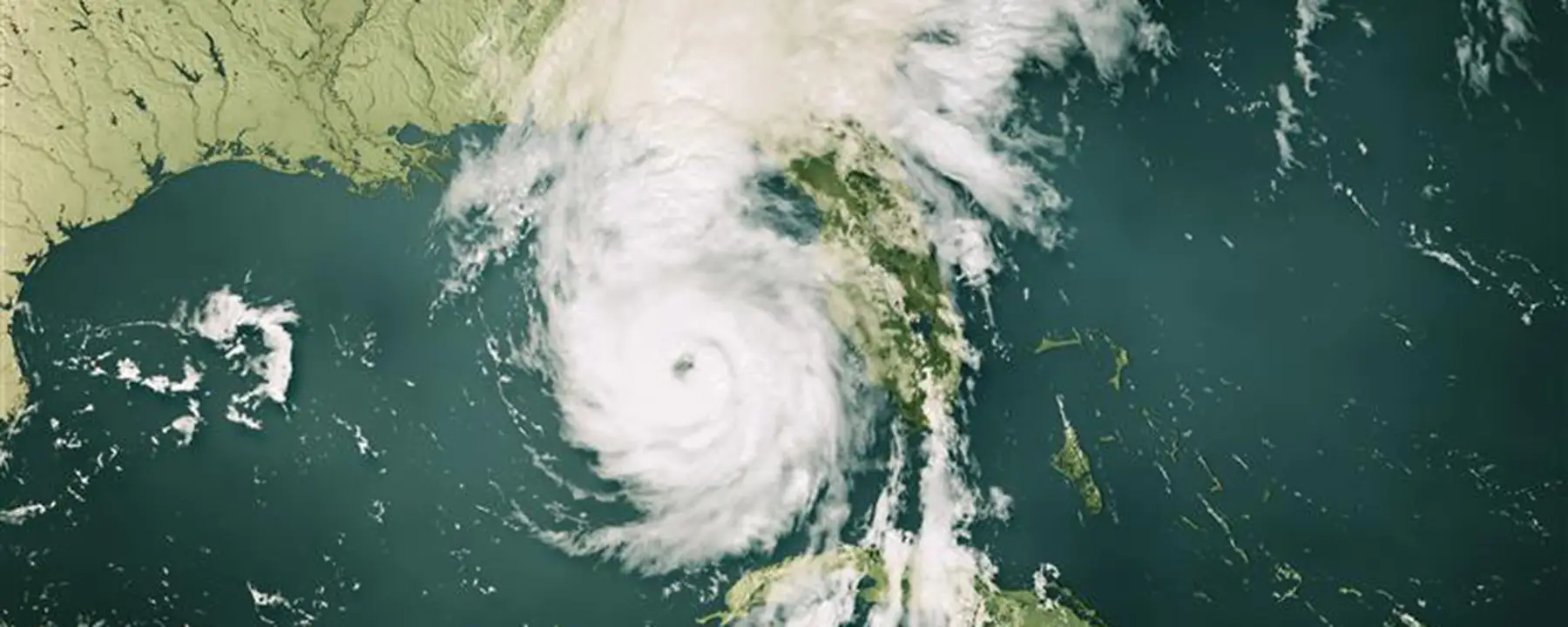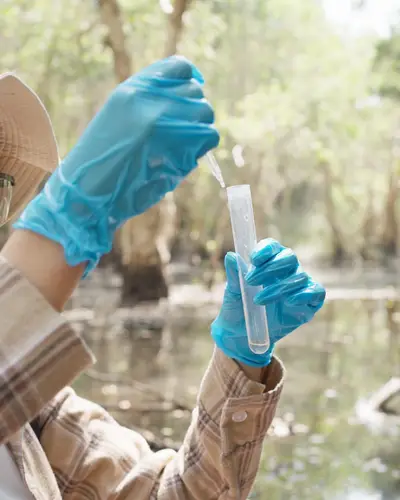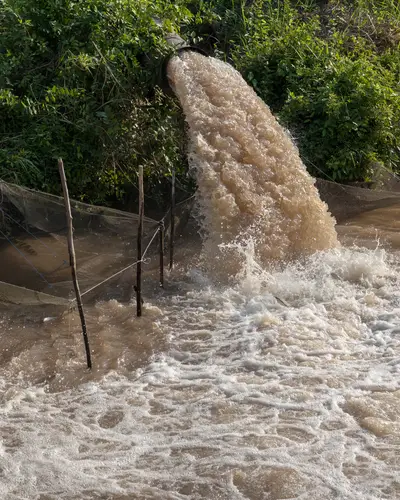Objective
To study, monitor, and analyze contaminants of concern that polluted the French Broad River in the aftermath of Hurricane Helene in Western North Carolina.
Approach
We partnered with Appalachian State University to study five water samples across 80 kilometers of the French Broad River. We compared the chemicals detected against the U.S. Environmental Protection Agency (EPA) database to better understand the impacts on human health from chemical exposure.
Impact
This project can inform Western North Carolinians of the dangers of contaminant exposure in areas heavily effected by Hurricane Helene. It can also provide guidance for how all communities can better prepare and mitigate the effects of contaminant exposure in the event of future storms.
Devastation of Hurricane Helene in Western North Carolina
When Hurricane Helene swept across the Southeastern United States in late September of 2024, it left a 500-mile swathe of destruction that resulted in an estimated $78.7 billion in damages, over 5,000,000 people displaced, and over 250 fatalities.
Western North Carolina experienced the most severe impacts. The combination of heavy rainfall, high winds, and mountainous terrain triggered flooding, treefalls, almost 2,000 landslides, and tornadoes, resulting in mass destruction and extended power outages. The storm dealt significant damage to Lake Lure Dam, more than 120,000 homes and businesses, over 6,000 miles of roadways, and 160 water and sewer systems. More than a year later, residents are still dealing with fire hazards from debris that has yet to be cleared. The monetary cost is staggering: shortly after the storm, the total cost of damages and recovery in Western North Carolina alone was estimated at more than $59 billion.
One lingering consequence of Helene is its impact on the aquatic environment. Widespread flooding and the destruction of aging urban infrastructure sent a host of contaminants into the region's many streams and rivers.
Record Flooding in the French Broad River Exposes Contaminants of Concern
The French Broad River basin is one of the largest river systems in North Carolina, with over 350 km of river flowing through Western North Carolina and into Tennessee. Running through areas used for tourism, agriculture, manufacturing, water sports, and fishing, the French Broad is a vital resource for both ecological and economic activities. During Hurricane Helene, the river basin crested at approximately 24.7 ft, setting an all-time record and surpassing the historic levels of the Great Flood of 1916 (24 ft), 1940 (19.25 ft), and 2004 (14.5 ft).
Past studies have shown that flooding can leave waterways contaminated. Floodwaters disrupt the systems engineered to contain hazardous materials and sewage, releasing the contaminants into lakes and rivers, including those used for drinking water.
Helene’s historic impact, along with the growth of business, agriculture, and industry throughout the affected area, led to significant concern that residents could be exposed to a range of anthropogenic contaminants, including:
- Pathogens
- Heavy metals
- Per- and polyfluoroalkyl substances (PFAS)
- Plastics and other polymers
- Pesticides
- Pharmaceuticals
The French Broad River’s ecological and economic value and history of severe flood events makes it a priority site for contaminant monitoring after natural disasters.
RTI Analyzes Contaminated Water in the French Broad River
Working with researchers at Appalachian State University, we studied the chemical contaminants within the water in the French Broad River shortly after Helene. As North Carolina-based scientists, we share a deep concern for the region and its residents, who are working to recover while bracing for future weather events. Understanding Helene’s impact can help Western North Carolina prepare.
We took samples at 5 sites across 80 km of the French Broad River. We measured a selection of PFAS chemicals and screened for other chemicals using non-targeted analysis — an approach that allows scientists to identify, with some level of confidence, the chemicals that are present in a sample when they don’t know what to expect.
The chemicals that were detected were compared to a United States Environmental Protection Agency (EPA) database to understand their potential hazards to human health, which can help to prioritize chemical monitoring efforts after future disasters. Although the number of samples that we could collect safely was limited, our analysis still provides a foundation for future studies, including how to identify sites for monitoring and specific chemicals of concern.

Map created by Nikki Deluca.
Forever Chemicals Exceed Drinking Water Limits
One of our most notable findings is that water in the French Broad River that all sites contained multiple PFAS with high levels noted in one site. We found 11 different PFAS present in the water samples from our study. Total concentrations ranged widely across the five sites, but they exceeded levels of previous surface water studies in the region.
Our team has extensive expertise in PFAS and their potential health effects. These chemicals are a class of thousands of synthetic polymers widely used in consumer products including pesticides, makeup, food packaging, non-stick cookware, and textiles. PFAS have been linked to cancer, hormonal abnormalities, and immune system effects. These compounds do not break down in the environment, can be taken up by plants, and can accumulate through the food chain. PFAS have been detected in watersheds across North Carolina and other areas of the country, making them a widespread concern for human health.
Screening for Other Contaminants of Concern
In addition to monitoring for PFAS compounds, our non-targeted analysis pointed to hundreds of other pollutants. Many of these are usually associated with plastic debris and wastewater systems. They are potentially hazardous to aquatic species as well as humans.
One site in Marshall, NC, had elevated levels of chemical and microbial contamination that indicated a possible release from a wastewater facility. At a second site, we detected high levels of chemicals from plastic, likely a result of plastic debris along the shoreline after the storm. While some of the compounds we detected are included on the EPA’s priority pollutant list for surface water, many of the other compounds are not regulated and are still potentially cause for concern.
This study emphasizes the need for long-term hazard monitoring of flood-impacted freshwater systems, as some of the chemicals we detected are persistent and could be remobilized into the water with new storms or other human activities.
Monitoring Hurricane Damage to Protect Against Environmental Contaminants
Extreme storms can unleash invisible hazards into the environment, including our waterways. Our research offers a foundation for future recovery efforts and contaminant monitoring after hurricanes like Helene or other flooding events. This work also underscores the need for stronger protections against environmental contaminants.
Next steps: In the area impacted by Hurricane Helene, additional testing can provide insights into the long-term fate and transport of contaminants for health risk assessment. It is also important to prepare for future storms by getting more extensive baseline data on chemical contaminants in waterways. This baseline data will help us to understand the extent of contamination resulting from storms and potential point sources that could be vulnerable to storm damage.
Offering a Science-based Response in the Aftermath of Disaster
RTI experts have experience monitoring for known and emerging contaminants to protect human health after disasters. We also have staff that are skilled at risk assessment and communication with impacted populations.
Our multidisciplinary teams can partner with community members, decision-makers, and first responders to support informed, science-based response and recovery efforts that ensure the health and wellbeing of the public after disasters.
- Appalachian State University







